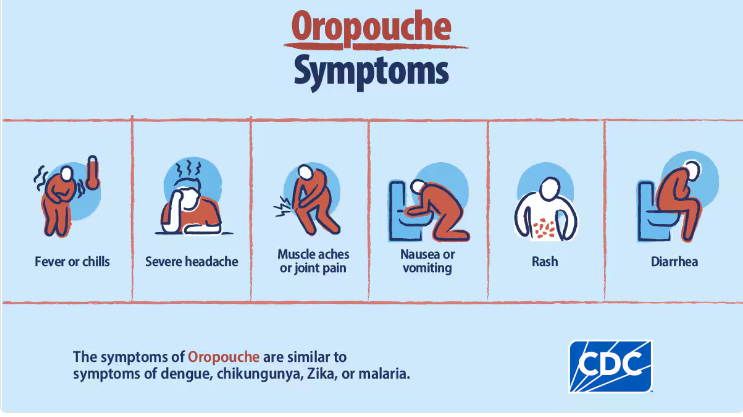
(Photo : https://www.cdc.gov/oropouche/about/index.html)
Health experts have raised concerns over the recent spread of the not-so well-known Oropouche virus, an arbovirus primarily endemic to the Amazon region of South America, to other parts of the world, mainly US and Europe.
Between January and August 2024, more than 8,000 cases of Oropouche fever have been recorded in Brazil, Peru, Bolivia, Colombia and Cuba.The virus has also killed two women in Brazil and two unborn children recently. But latest reports show that the virus is no more confined to its original region and is spreading fast to new places.
Causing concern among health experts, the virus has found its way to US and Europe. About 21 US travelers who visited Cuba tested positive for the disease recently. Similarly, Europe too have reported 19 cases of Oropouche fever.
while issuing a health alert, health officials from CDC recommended closely monitoring travelers who have returned from the areas affected by the virus. "This Health Advisory advises on evaluating and testing travelers who have been in impacted areas with signs and symptoms consistent with Oropouche virus infection," a statement appeared in the official website of CDC read.
The insect -borne disease,spread through midges or mosquito bites, wasfirst detected in a three-toed sloth, thus earning it the name 'sloth fever.' It has symptoms similar to dengue, chikungunya, malaria and Zika including fever, nausea, rashes, diarrhea and headache. Some other symptoms include dizziness, eye pain andvomiting.
According to health experts,patients suffering from oropouche fever often experience neurological symptoms. It can also cause neuro-invasive diseases like meningitis and encephalitis. Detection of the viruso utside the Amazon region brings concern, according to experts.
"The virus, which used to circulate almost exclusively in the Amazon region, is now circulating in other regions, and this is very worrying."Eurico Arruda, professor of virology at the Faculty of Medicine at the University of Sao Paulo, in Ribeirão Preto, told SciDev.Net.
He said the virus has undergone genetic changes and has become more dangerous. "If two viruses infect the same cell it can result in a different virus," Arruda, who has studied Oropouche virus for 30 years, explained. "This apparently happened, which caused a change in its behaviour, making it more aggressive."
The virus got its name from the village Vega de Oropouche in Trinidad and Tobago where the first human case was reported in 1955. There is no vaccines or treatment for the disease.









